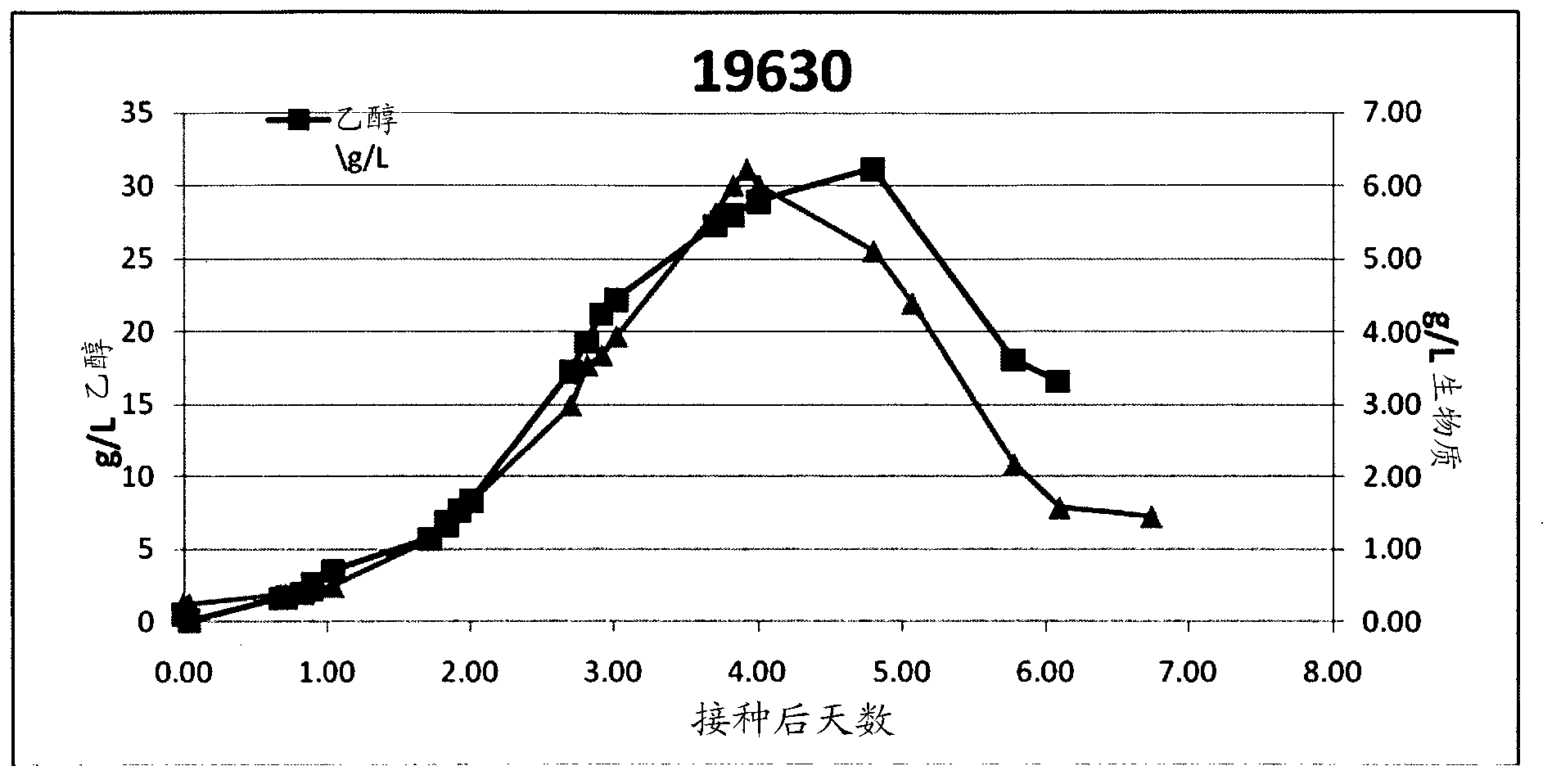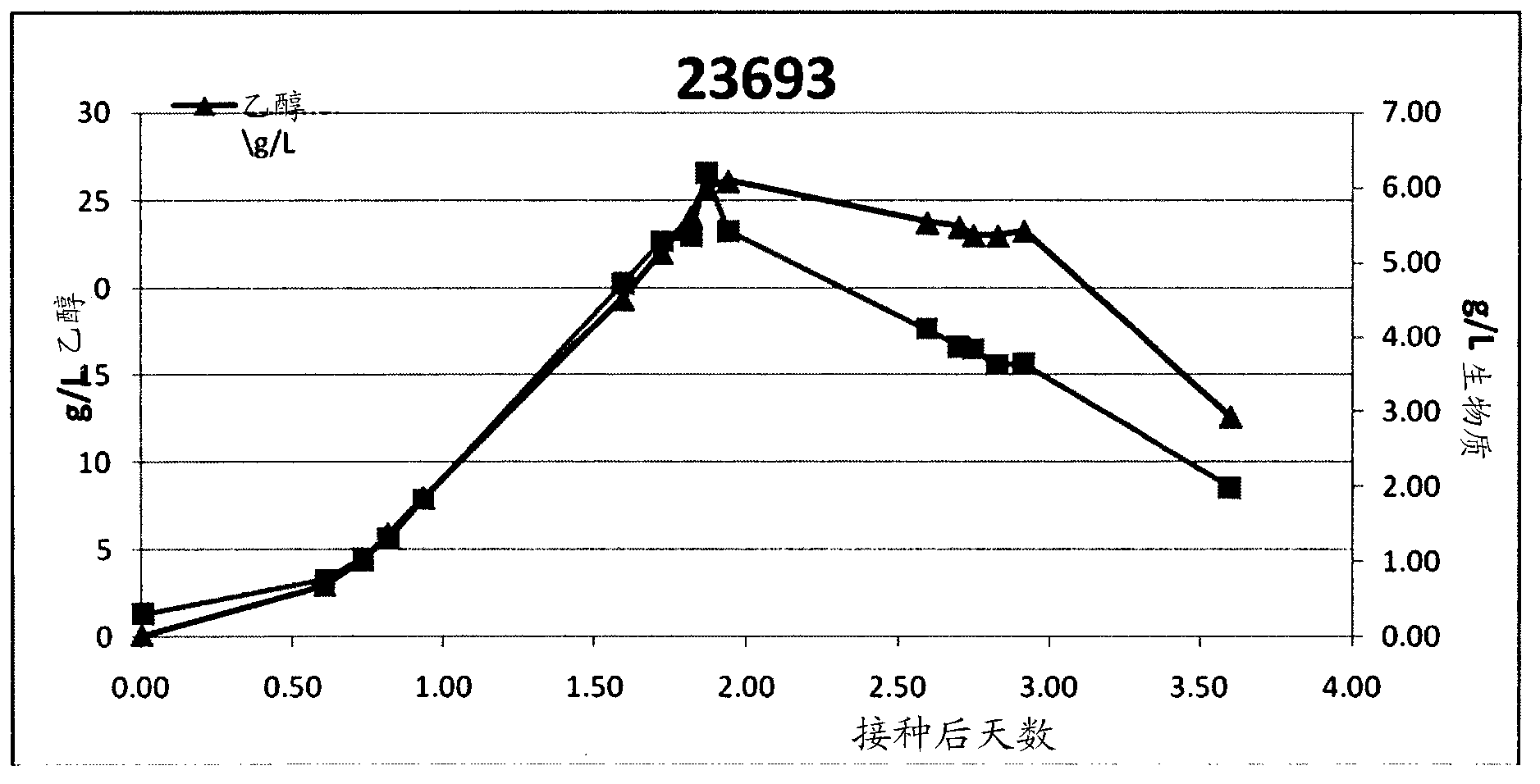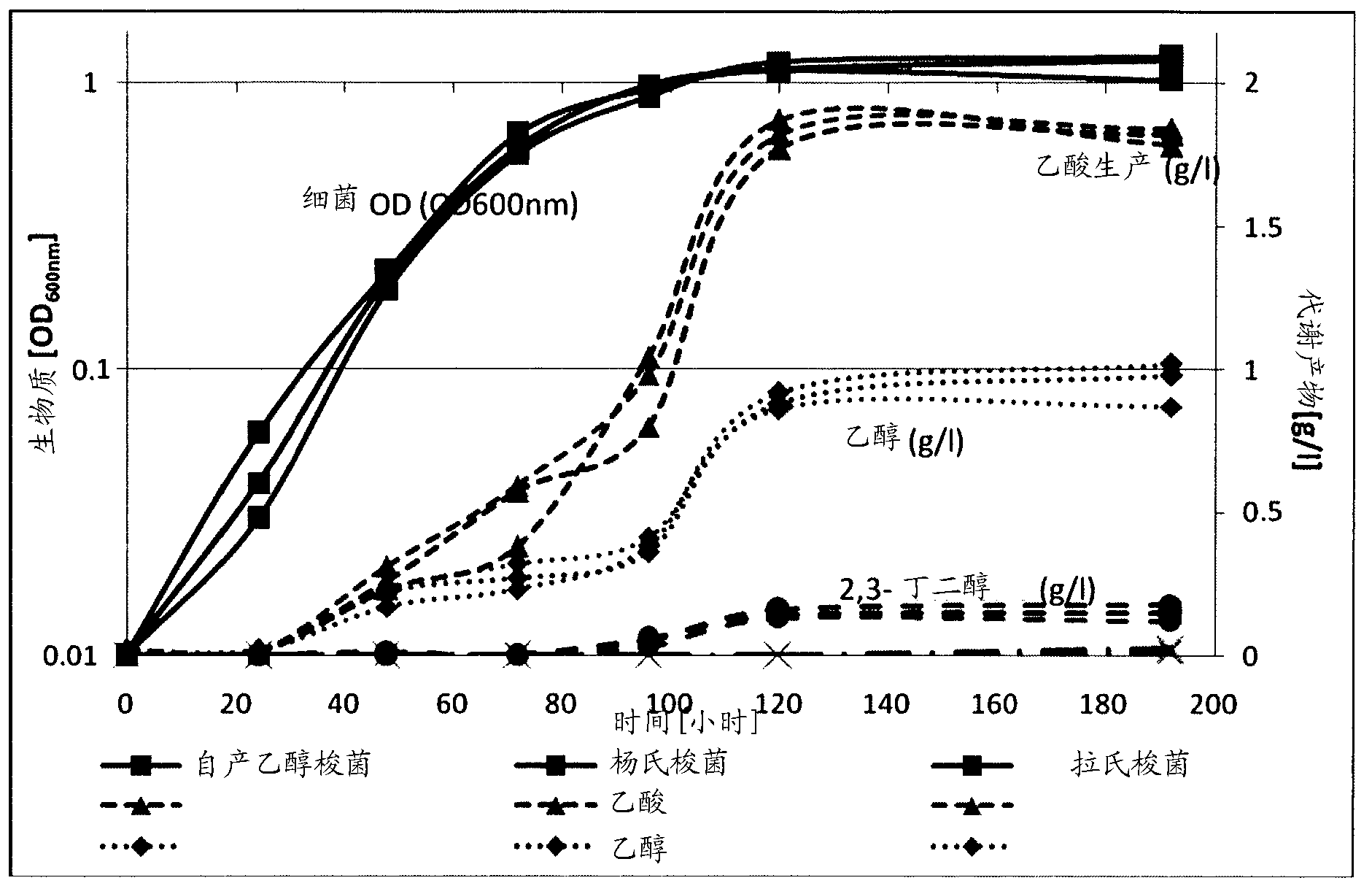Process for producing ethanol and ethylene via fermentation
A self-produced ethanol Clostridium and ethanol technology, applied in the direction of microorganism-based methods, biochemical equipment and methods, fermentation, etc., can solve the problems of increasing factory costs and paying emission taxes
- Summary
- Abstract
- Description
- Claims
- Application Information
AI Technical Summary
Problems solved by technology
Method used
Image
Examples
Embodiment 1
[0109] Materials and methods:
[0110]
[0111] Preparation of Cr(II) solution: A 1 L three-necked flask was fitted with gas-tight inlet and outlet so that it could be operated under inert gas and the desired product was subsequently transferred to a suitable storage flask. Add CrCl to the flask 3 ·6H 2 O (40 g, 0.15 mol), zinc particles [20 mesh] (18.3 g, 0.28 mol), mercury (13.55 g, 1 mL, 0.0676 mol) and 500 mL of distilled water. use N 2 After rinsing for one hour, the mixture was warmed to about 80°C to initiate the reaction. at constant N 2 Stirred under flow for 2 hours, then cooled the mixture to room temperature and continued to stir for 48 hours, by which time the reaction mixture had turned into a dark blue solution. Transfer the solution to N 2 Rinse the serum bottle and store in the refrigerator until use.
[0112] Bacteria: Two types of Clostridium autoethanogenum were used in the following examples.
[0113] Both DSM19630 and DSM23693 were deposited at...
Embodiment 2
[0126] Materials and methods:
[0127] Bacterial strains and growth conditions: Clostridium autoethanogenum DSM10061 and Clostridium ljungdahlii DSM13582 were obtained from DSMZ (Deutsche Sammlung von Mikroorganismen und Zellkulturen GmbH), Clostridium rasseri ATCC-BAA622 TM Obtained from ATCC (American Type Culture Collection). All organisms were grown anaerobically in modified PETC medium (ATCC medium 1754) at 30 °C (C. lasseri) or at 37 °C (C. autoethanogenum and C. ljungdahlii), respectively.
[0128] The improved PETC medium (per L) includes 1g NH Cl, 0.4g KCl, 0.2g MgSO 4 ·7H 2 O, 0.8g NaCl, 0.1g KH 2 PO 4 , 20mg CaCl 2 2H 2 O, 10ml trace element solution (see below), 10ml Wolfe's vitamin solution (see below), 2g NaHCO 3 and 1 mg resazurin. After adjusting the pH to 5.6, the medium was anaerobically boiled, dispensed, and autoclaved at 121° C. for 15 minutes. Steel mill exhaust gas (composition: 44% CO, 32% N) collected from the New Zealand steel site in Glenbrook...
PUM
| Property | Measurement | Unit |
|---|---|---|
| boiling point | aaaaa | aaaaa |
Abstract
Description
Claims
Application Information
 Login to View More
Login to View More - R&D
- Intellectual Property
- Life Sciences
- Materials
- Tech Scout
- Unparalleled Data Quality
- Higher Quality Content
- 60% Fewer Hallucinations
Browse by: Latest US Patents, China's latest patents, Technical Efficacy Thesaurus, Application Domain, Technology Topic, Popular Technical Reports.
© 2025 PatSnap. All rights reserved.Legal|Privacy policy|Modern Slavery Act Transparency Statement|Sitemap|About US| Contact US: help@patsnap.com



